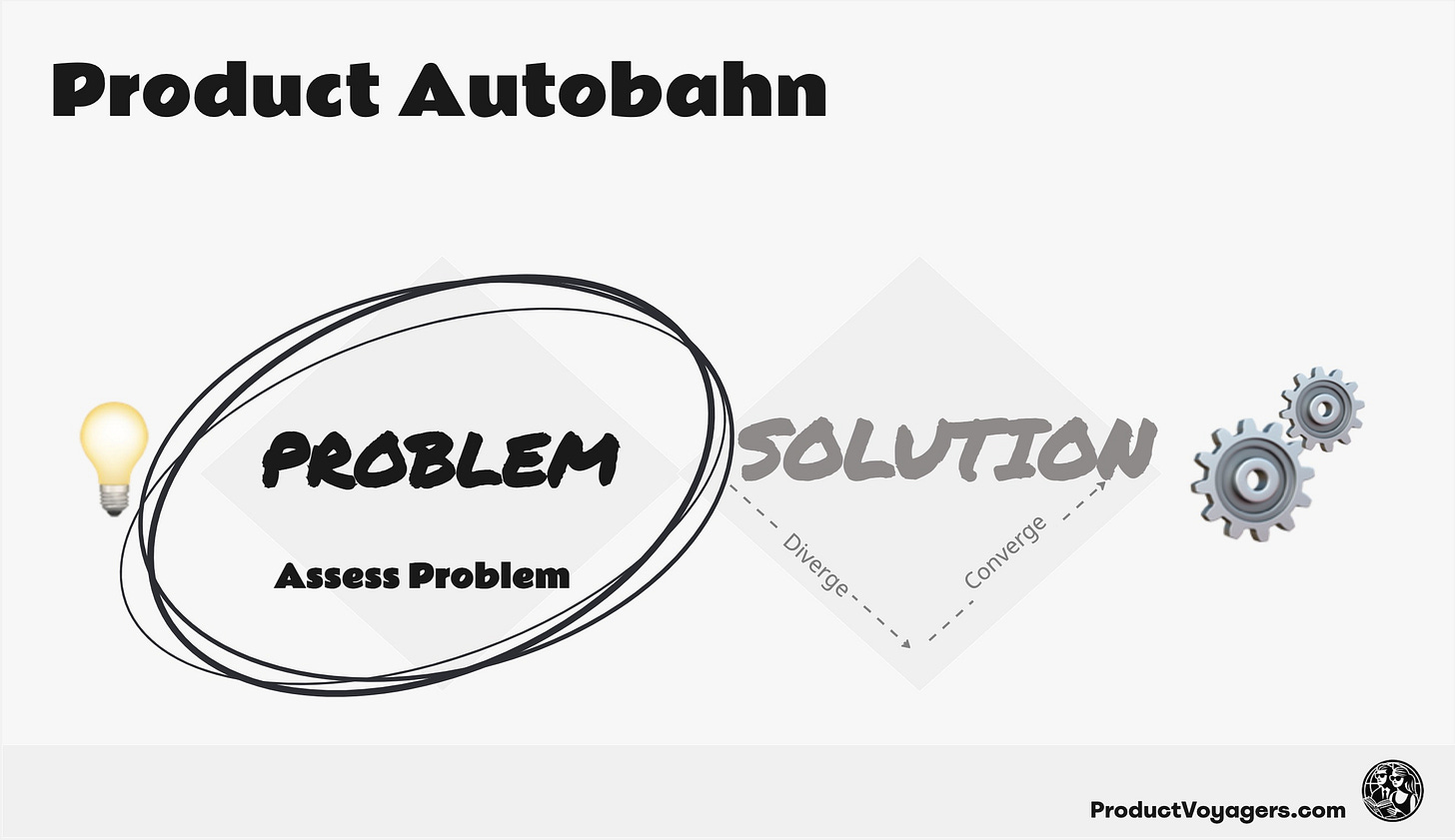Product Autobahn: Assessing What’s Worth Solving
Good products don’t start with solutions—they start with clarity. In Phase 1 of Product Autobahn, we focus on assessing the real problem, its scope, and why it’s worth solving.
Remember Google Wave? It launched in 2009 with impressive technology and massive hype—only to be shuttered a year later. Not because of poor execution, but because it solved a problem that most users didn't actually have.
Let's be honest—one of the reasons we love product management is because it's about building things. There's a thrill in bringing ideas to life, solving user pain points, and shipping something new.
But that excitement can also lead us astray. Too often, we jump into solution mode too early, crafting features before fully understanding the real problem. We brainstorm, prototype, and debate UI tweaks—only to realize later that we've missed critical gaps in our thinking. And by then? It's often too late, too expensive, or too painful to backtrack.
The truth is, most failed features or poorly adopted products don't fail because of bad execution. They fail because we were solving the wrong problem at that point of time.
Results of Product Autobahn
Since introducing Product Autobahn into our daily process, we’ve seen a striking pattern:
🚦 40% of initiatives never make it past the first two phases—they don’t move from Problem to Solution.
And that’s a good thing. Why? Because it means that the 60% that do move forward are solving the right problems—not just the loudest requests, not just the easiest ideas to build, but the ones that truly matter.
A Quick Recap: The 4 Phases of Product Autobahn
In our last article, Product Autobahn: A Structured Approach to Building Better Products, we introduced the four key phases that help teams move fast without rushing into the wrong solutions:
Problem Space
🔍 #1 Assess Problem – Understand the root cause and scope of the problem.
🎯 #2 Identify Opportunities – Define the right problem to solve.
Solution Space
💡 #3 Imagine Solution – Validate concepts and determine what to build.
🛠️ #4 Craft Solution – Finalize how the solution works.
Today’s Focus: The Assessment Phase of Problem Space
In this article, we’ll deep dive into the problem space and share:
Guidance & templates to help you properly Assess the Problem.
A real-world example—told through the story of a stakeholder who requested an AI chatbot (and what happened next).
By the end, you’ll have practical tools to ensure that every product decision starts with a real problem, not just a shiny idea. 🚀
How Does It Usually Start?
To better understand the difference between each phase of Product Autobahn, let’s look at an example—one that Wafaey and I have encountered more times than we can count.
A stakeholder approaches a Product Manager with a great idea: "We need an AI chatbot to handle customer service inquiries and reduce the number of support tickets. Our agents are overwhelmed!" (Because these days, everything needs AI, right?)
In a world without Product Autobahn, here’s how this conversation typically unfolds:
As Product Managers, we would try to push back, explaining how the roadmap is already packed.
We might ask for more data, only to find that the stakeholder has little to back up their request.
In some cases, we'd reluctantly investigate it ourselves, trying to assess the actual problem behind the request.
And often, these conversations felt...well, uncomfortable—because no one was fully aligned on how ideas should be validated before execution.
At the end of the day, this is just part of the reality of product management—but it doesn’t have to be.
What Changes with Product Autobahn?
First and foremost, leadership alignment is key.
As we discussed in our previous article, when organizations adopt Product Autobahn, leaders must ensure that the process is clear and agreed upon at a broader scale. This isn’t just a framework for Product Managers—it’s a way of working that everyone needs to buy into.
Why? Because Product Managers shouldn’t be gatekeepers, constantly fending off individual feature requests. Instead, there should be a shared understanding that every idea—no matter how big or small—goes through the same structured validation process.
So, if you’re a Product Leader, the first step is to set this principle in stone across your teams:
🚦 No idea moves forward without first passing through the Problem Space.
What Happens Next?
When a Product Manager encounters a request like the AI chatbot, instead of debating or dodging, they can simply refer to the framework:
"Sounds like an interesting idea, but I have some questions. Let’s first go through the Assess Problem phase to make sure we fully understand what we’re solving."
From there, one of two things can happen:
1️⃣ The Product Manager collaborates with the stakeholder to clarify the problem and present it jointly to the team.
2️⃣ The stakeholder prepares the first phase independently and presents it themselves to the squad or domain team.
Either way, every idea is now presented in a structured, repeatable way using the same Problem Assessment Template.
Keep It Simple: 1 Slide, 1 Message
Through experience, we’ve learned that the most effective way to communicate problem space isn’t through long PRDs or complex documents. Instead, summarize everything into a single slide.
🚀 Why?
Decision-makers can quickly grasp the full picture at a glance.
Teams get consistent, structured overview of each phase —if Product Autobahn is used across multiple teams, the format remains the same, making it easy to follow.
It keeps discussions focused on the real issue, not personal opinions or solution bias.
Now, let’s put this into practice with an example. Below is how the AI chatbot request would look if properly framed using the Assess Problem and Identify Opportunities templates. 🚦
🔍 Phase #1 Assess Problem: Understand the Root Cause and Impact of the Problem
Now that we’ve established a structured way to handle incoming ideas, the next step is to put this process into action.
Instead of debating whether an AI chatbot is the right solution from the start, we take a step back and focus on the problem first. What are we really trying to solve? Is the challenge truly about AI, or is it about reducing support ticket volume? Could there be other, more effective ways to achieve this goal?
This is where Phase 1: Assess Problem comes in. It’s the foundation of Product Autobahn—helping teams deeply understand the root cause, scope, and impact before even thinking about solutions.
To illustrate this, let’s walk through the Assess Problem template 🚦 using our AI chatbot request as an example 👇.
Keep reading with a 7-day free trial
Subscribe to Product Voyagers to keep reading this post and get 7 days of free access to the full post archives.








